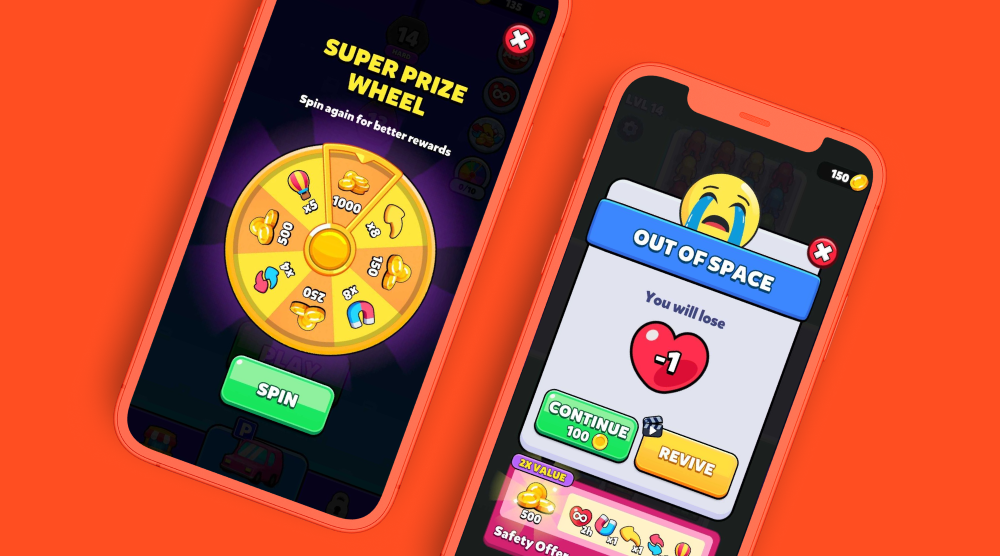While many thought hyper-casual gaming was a trend that would disappear after just one year, this genre is not only still around, it’s more popular than ever and continuing to adapt to the shifting gaming environment.
In 2020, hyper-casual games had a record-breaking year - in Q1 2020, global hyper-casual game installs grew 103% and session duration increased 72% in March alone. Keep in mind, too, that this is coming off of another impressive year - hyper-casual games represented 78% of all mobile game downloads in 2019. But, the genre has enjoyed incredible popularity even before people across the globe were downloading 1.2 billion mobile games in a month.
With hyper-casual games changing with the times, let’s explore the top 4 trends expected to define the genre in 2021.
1. Games will meet in the middle of casualization
Tomer Geller, Game Design Lead at Supersonic sees that there are two ways casualization is happening in the world of hyper-casual games. The first is casual games becoming more hyper-casualized. We’re expecting to see games with heavier concepts, more complex mechanics, and other features that define mid-core and other genres adopting hyper-casual themes and gameplay.
Casualization is going the other direction, too, with some hyper-casual games expected to become more like casual games. That means they’re going to become more reflex-based and require more skill. By challenging users, this goes against the original intention of hyper-casual games, which was to be easy and accessible for everyone.
So while on the one hand, traditionally casual or even mid-core games are becoming more hyper-casual, some hyper-casual games are becoming more like these casual and mid-core games. Take Bazooka Boy, for example. This game is a classic hyper-casual game in its simple yet addicting game mechanic (drag-and-release). But, it distinguishes itself with a concept that requires more skill by creating more than one way to solve a level. Players need to put in more effort to solve levels and are met with unexpected twists - like getting a ricochet that kills them.
This intersection of hyper-casual and casual is the direction this genre is expected to keep going, and with it we can expect to see the rise of hyper-casual sub-genres. Similar to the casual genre which has sub-categories like Puzzle and Trivia, casualization in hyper-casual gaming will encourage new categories to arise, and we will have different types of hyper-casual games. There will be more complex, rich and skill-based games, but also the traditional, easy-to-play for everyone.
2. The big IPs will enter the field
Another trend Tomer predicts is well-known IPs entering the hyper-casual market, with hyper-casual studios supporting their development as the behind-the-scenes powerhouse. IPs like Harry Potter (Harry Potter: Hogwarts Mystery) and Super Mario (Super Mario Run) are already players in the casual genre and represent the highest grossing games across the app stores.
Specifically, 25% of the highest 200 grossing games are backed by third-party IPs. The reason why IPs can generate so much revenue for the game studios is that brand recognition translates into a positive impact on retention, DAUs, in-app purchases, and playtime. Users that are loyal to a brand are more likely to play a game for longer - which could boost hyper-casual’s low LTV. And for IPs, they get access to the mass audience hyper-casual offers, which means not only an opportunity to increase brand awareness and inspire brand loyalty, but also to drive sales both in and outside of the app.
In the past, IPs mainly released games that fell under the casual, mid-core, and hardcore genres - only 5% of hyper-casual games were backed by 3rd-party IPs in 2020. But, we’re expecting to see IPs get into the hyper-casual game as the value of this genre continues to prove itself. Already, we’re seeing promising acquisitions of hyper-casual game studios by big-name publishers who’ve worked with IPs in the past, which started in 2019 with Voodoo acquiring London-based studio Gumbug, Zynga acquiring Rollic this year, and Russian-based My.Games - the video game arm of Mail.ru - investing a minority stake in Mambo Games.
3. Fringe themes will go mainstream
Hyper-casual is a creative-dependent genre, so design and visuals are going to continue to be important. In the past year, Niv Touboul, Head of in-house games team at Supersonic, saw some very strange creatives that developers used as a way to stand out and grab user attention - but, they didn’t relate much to the game. Now, Niv is expecting those wacky ideas to be the game itself and for developers to design themes in 2021 that are offbeat, weird, and surprising - all of which engage users visually.
Breaking free of the usual mold in terms of traditional color schemes, shapes, environments, concepts, etc. is going to become the new norm as users seek something different than what they’re already used to from their games. So, we can expect the rise of quirky hyper-casual games, like vegetable C-sections and other, slightly awkward concepts that make users curious and interested in playing.
4. Game design gets a revamp and becomes more realistic
The final trend we’re expecting in hyper-casual gaming in 2021 is also design-focused from Niv. We’ve been seeing the introduction of more powerful mobile device technology - like augmented reality and cloud gaming - which enables more complex game design. This, combined with users looking for more realistic, unique gameplay as most entertainment - movies, video games, desktop gaming, etc. - is moving towards realism, will encourage developers to design more realistic games.
We’re expecting some hyper-casual graphics to move away from their simple, cartoon-like design to become more refined and realistic. To keep with the trend, Unity will have more lifelike assets available in their library. Many hyper-casual developers use these visuals instead of designing from scratch, which not only makes it easy for anyone to start developing these games but will also make realistic graphics the standard in hyper-casual. Demolish! by Voodoo is a good example of this, which simulates real-life destruction with its realistic art.
Getting into hyper-casual development
The trends set to define hyper-casual development in 2021 are an indicator that this genre continues to grow and transform. Many developers have already grown their hyper-casual games into profitable businesses, and even more are poised to succeed in the coming year. With new themes and genres emerging under the hyper-casual category and the user base growing, there’s never been a better time to get into hyper-casual game development.
Let's put these tips to good use
Publish your game with Supersonic


